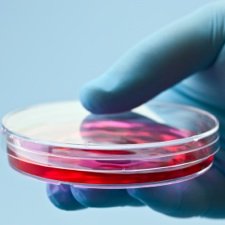
Researchers develop randomly distributed attachment sites or 'sticky spots' on the extracellular matrix (ECM) of the cell
Singapore: A study conducted by researchers at the University of California, San Diego, US, and the University of Sheffield, UK, revealed that attachment sites or 'sticky spots' are distributed randomly throughout the extracellular matrix (ECM) in the body of the cell.
The study was jointly published by lead authors, Somyot Chirasatitsin, bioengineering PhD student, University of California (UC), San Diego, US, and Ms Priyalakshmi Viswanathan, University of Sheffield. The research was also co-authored by Dr Adam Engler, a bioengineering professor at UC San Diego, and Dr Giuseppe Battaglia, professor, synthetic biology, University of Sheffield; in the Journal of the American Chemical Society (JACS).
This is a crucial discovery for scientists, who are trying to devise ways to grow stem cells in the lab in ways that closely mimic biology. Presently, the synthetic materials being used by scientists don't have more uniformly distributed sticky spots. The group has been able to mimic random stickiness in a foam biomaterial that is made out of polymers. The scientists found that it is possible to tune the size and distribution of the foam's adhesive regions by modulating the appropriate ratio of sticky and non-sticky polymer. Having less sticky polymer in the foam made its adhesive patches smaller and more dispersed, just as with natural ECM.
Dr Engler said that, "It's like what happens when you make balsamic vinaigrette and all the vinegar is randomly distributed in tiny bubbles throughout the oil. We shook these two polymers up sufficiently to form randomly distributed nano-scopic patches of the sticky material amid the non-sticky material."
The research was supported by grants from the US National Institutes of Health (DP02OD006460), Human Frontiers Science Program, and the Engineering and Physical Sciences Research Council in the UK.




